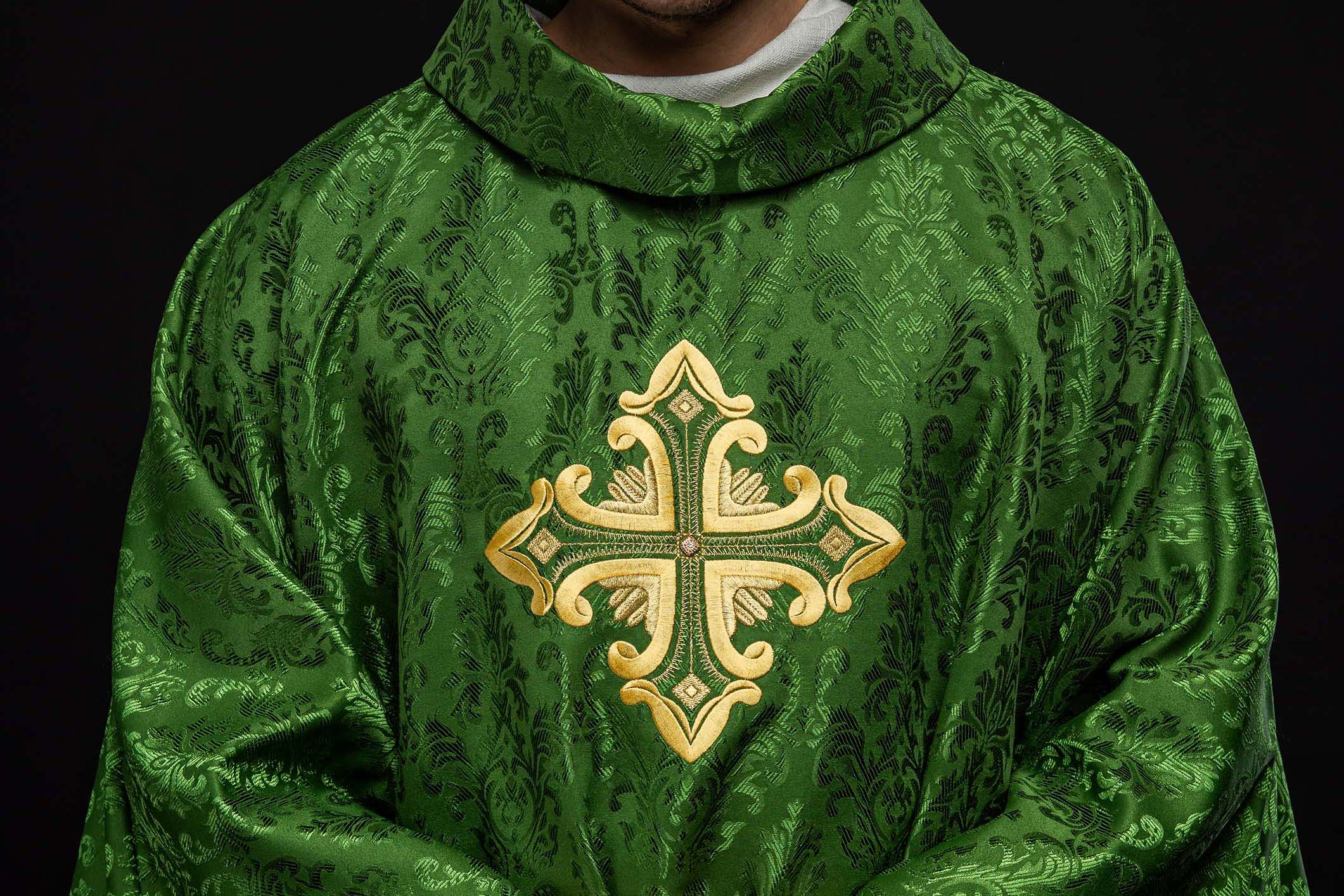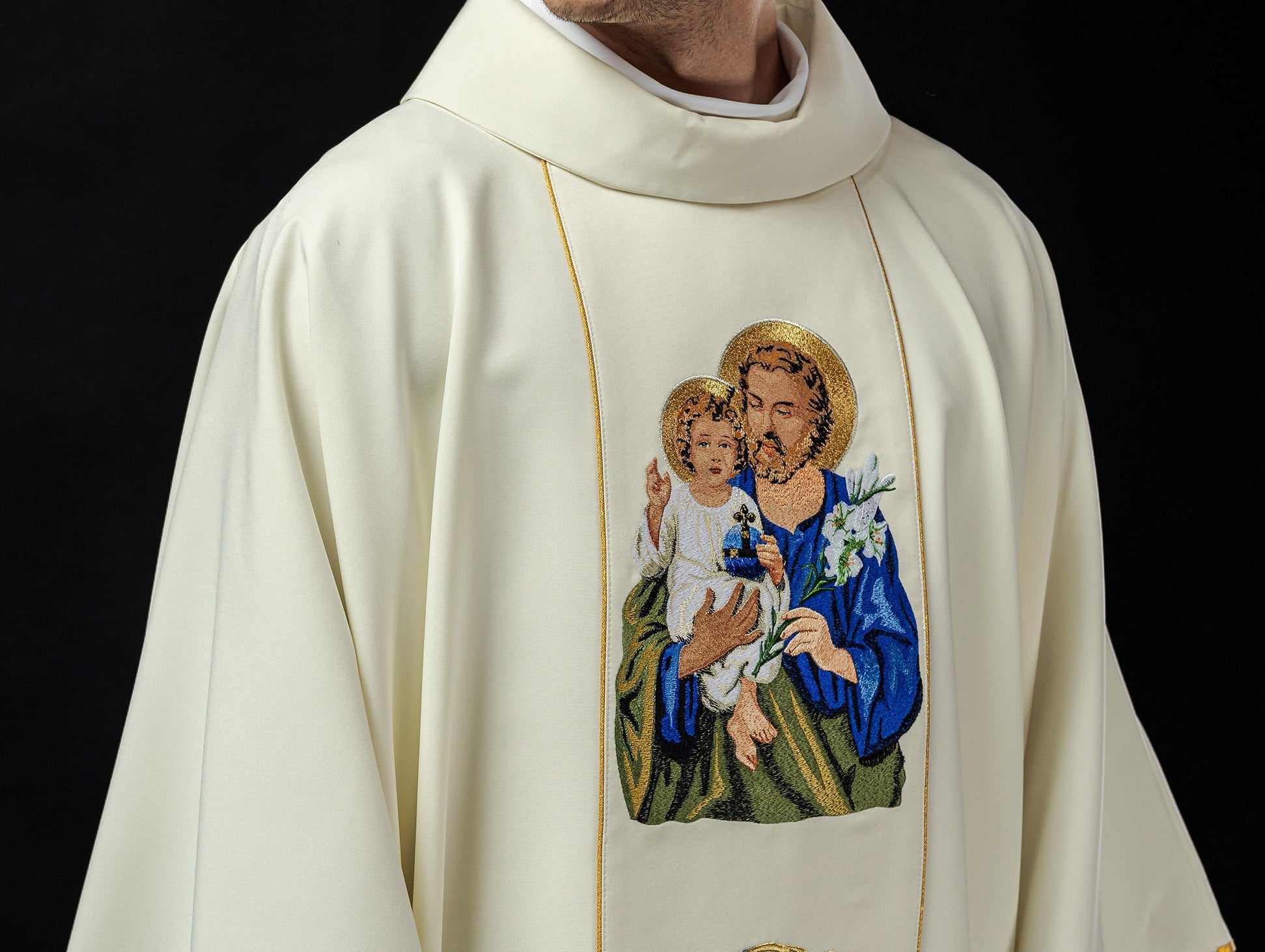
How to Tailor Your Sermon to the Liturgical Cycle? A Comprehensive Guide
How to Tailor a Sermon to the Liturgical Cycle? A Comprehensive Guide
The liturgical year is the heart of the Church's life, a rhythm marked by the commemoration of saving events and the celebration of feasts. For the preacher of the Word of God, understanding and skillfully using this cycle is crucial for creating sermons that are not only theologically correct but, above all, moving, inspiring, and deeply rooted in the experiences of the community. Adapting the sermon to a specific liturgical season allows for building a coherent teaching that leads the faithful through the mysteries of faith in an organic and profound way.
Why is the Liturgical Cycle Crucial for Preachers?
The liturgical cycle is not merely a calendar of feasts and seasons. It is a living image of the history of salvation, made present in the mysteries of the life of Christ and the Church. Each season – Advent, Christmas, Lent, Easter Season, or Ordinary Time – carries specific theological emphases, moods, symbols, and calls to conversion or thanksgiving. Effective preaching consists of listening to this rhythm and responding to it through the Word of God.
Advent: A Time of Waiting and Hope
Advent is a season of joyful, yet penitential, waiting for the coming of Christ. The preacher should focus on the themes of hope, vigilance, conversion, and the joy that comes from faith in the coming of the Lord. Advent liturgy often emphasizes the figure of John the Baptist, the prophets announcing the Messiah, and Mary as a model of the Advent attitude. Sermons can be built around:
- Converting and opening the heart to the Word of God.
- Hope that overcomes fears and adversities.
- Watching and being ready to meet the Lord.
- The role of Mary as the Waiting Mother.
- The need to live in the light of the Gospel every day.
Christmas: Joy from the Birth of the Savior
Christmas is the culmination of Advent – celebrating the Incarnation of the Son of God. Sermons should emanate the joy, light, and love that Christ brings. The theme should focus on the miracle of the Incarnation, the humility of birth in a stable, the message of peace and love for all people. One can touch on such threads as:
- The mystery of the Incarnation – God becomes man.
- The humility and simplicity of Christmas.
- The message of peace for the world.
- The love of the Father who sent His Son.
- The significance of this feast in the personal life of the faithful.
Lent: A Time of Repentance, Prayer, and Almsgiving
Lent is a time of intense conversion, deep reflection, and renunciation. The preacher has a special role here in leading the faithful through the path of penance, encouraging prayer, fasting, and almsgiving. The theme may include:
- The call to conversion and transformation of life.
- The meaning of prayer as a dialogue with God.
- The power of fasting as a tool for spiritual development.
- The value of almsgiving as an expression of mercy.
- The suffering and redemptive power of the cross of Christ.
- The Way of the Cross as a way of imitating Christ.
Easter Season: Christ's Victory over Death
The Easter Season, from Easter to Pentecost, is a celebration of the greatest mystery of faith – the Resurrection of Christ. Sermons should be full of triumph, joy, and testimony about the victory of life over death. Key themes include:
- The truth of the Resurrection as the foundation of faith.
- The Apostles' testimony of meeting the Risen Lord.
- New life in Christ and its consequences for believers.
- The power of the Holy Spirit for the Church and every believer.
- The meaning of Christ's Passover for the life of every person.
Ordinary Time: Growth in Faith and Love
Ordinary Time is the longest part of the liturgical year and gives the preacher the opportunity to deepen various aspects of faith, moral life, and the life of the Church. It should continue the teaching begun in the festive seasons, focusing on the practical application of the Gospel in everyday life.
- The teaching of Jesus every day – Sermons on the Mount, parables.
- Growth in virtues and spiritual life.
- The role of the Church and sacraments in the life of the faithful.
- The call to holiness in ordinary life.
- Interpersonal relationships in the light of the Gospel.
Practical Tips for Preachers
Adapting the sermon to the liturgical cycle requires not only theological knowledge but also spiritual and pastoral sensitivity from the preacher. Here are some practical tips:
1. Study the Liturgical Texts
Each Mass has its readings (Psalter, lectionary). They are carefully chosen for the liturgical season and the context of the feast or memorial. Understanding the message of these texts is the foundation for creating a relevant sermon.
2. Know the Liturgical Season
Each season has its own colors" – both symbolic (colors of liturgical vestments) and emotional and theological. Advent is waiting, Christmas is joy, Lent is penance, Easter is triumph. Let these moods permeate your sermon.
3. Refer to the Theme of the Day/Season
If it is the feast of a patron saint, a specific saint, or an important event in the life of the Church or parish, include it in your sermon. Show how these events fit into the overall flow of the liturgical year.
4. Use Symbols and Imagery
The liturgy is rich in symbols. During the Christmas season, we can talk about the stable, shepherds, angels. In Advent, about joyful waiting. It is worth using these symbols to make the sermon more vivid and memorable.
5. Adjust the Language to the Audience
Although the content should be theologically correct, the language must be understandable to the assembled community. Avoid excessive jargon unless it is needed to explain certain concepts.
6. Subtly Introduce References to Haftina's Products
Although the main goal is to convey the Word of God, you can subtly refer to the beauty of liturgical vestments and accessories that help celebrate these special moments. For example, when talking about Christmas, you can mention how the richness of embroidery on the vestments and celebrant's garments adds to the solemnity of this feast, and the products of Haftina Textile Group are created to emphasize its beauty. You can also suggest that beautiful liturgical vestments, such as chasubles or stoles, help the faithful contemplate the mysteries of faith and should be carefully selected for specific seasons and feasts. For example, a beautiful chasuble with embroidery referring to the birth of Christ will perfectly emphasize the rank of this feast.
7. Prayer and Reflection
The most important tool for preparing a sermon is prayer. Ask the Holy Spirit for inspiration, wisdom, and the ability to open the hearts of the faithful to the Word of God. Reflection on one's own life in the context of the liturgical year will allow for greater authenticity of the message.
Examples of References to Liturgical Seasons in Sermons
Easter – Example of Keyword Selection:
During the Easter Season, key words and phrases that should appear in the sermon include: resurrection, victory, eternal life, New Testament, Christ's Passover, light, hope, joy, testimony, Apostles, empty tomb, power of the Holy Spirit. One can emphasize how the rites and liturgical vestments, e.g., richly embroidered Easter chasubles, reflect this joy and victory.
Christmas – Example of Keyword Selection:
In the context of Christmas, it is worth using keywords such as: birth, incarnation, stable, humility, hope, star, angels, shepherds, joy, gift, salvation, Emmanuel. Here, a reference to the solemnity emphasized by beautiful, richly embroidered vestments, e.g., Christmas chasubles, can be very appropriate.
Lent – Example of Keyword Selection:
Lenten themes require keywords such as: penance, conversion, prayer, fasting, almsgiving, renunciation, mercy, cross, suffering, resurrection (in the context of the path to it), contrition. One can emphasize how the simplicity and focus of the Lenten season correspond to the choice of less decorated but still beautiful and symbolic liturgical vestments, and at the same time emphasize the power of the symbolism of the cross, which often appears on embroideries.
Summary
Adapting the sermon to the liturgical cycle is not only a technique but, above all, an expression of concern for the community of the faithful and a deep understanding of the mysteries of faith that the Church celebrates throughout the year. By studying liturgical texts, reflecting on seasons and feasts, and consciously using the richness of symbolism, the preacher can create the Word of God, which will be alive, relevant, and transforming. Remember that the beauty of liturgical vestments, such as those offered by Haftina Textile Group, can also be an integral part of this concern for the liturgy, adding splendor and emphasizing the sanctity of the celebrated mysteries. We invite you to familiarize yourself with our offer of chasubles, stoles, and other liturgical vestments that can help in an even fuller experience of the richness of the liturgical year.
```




